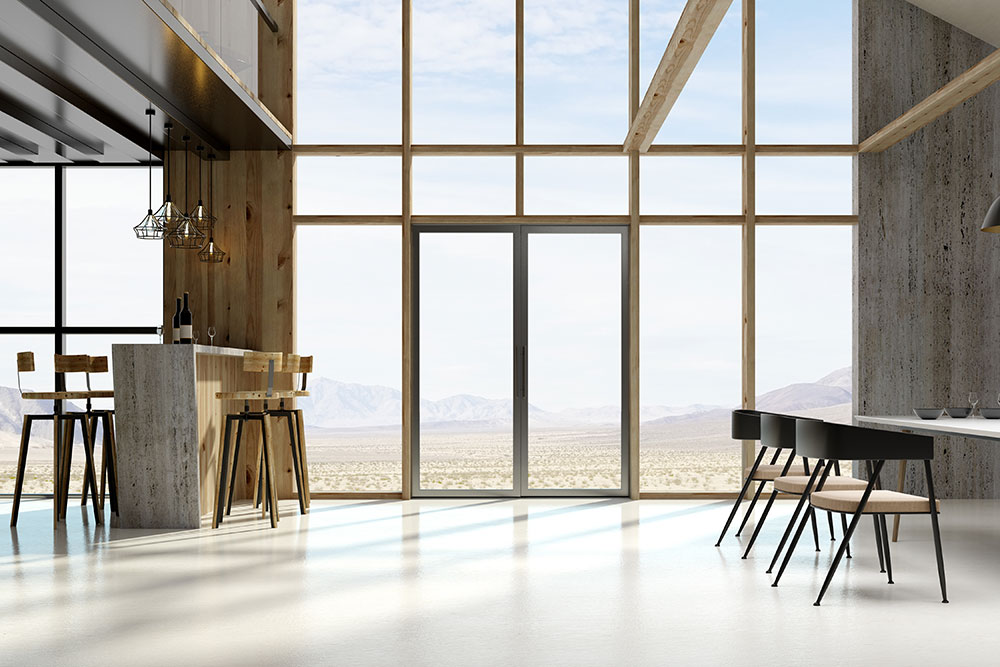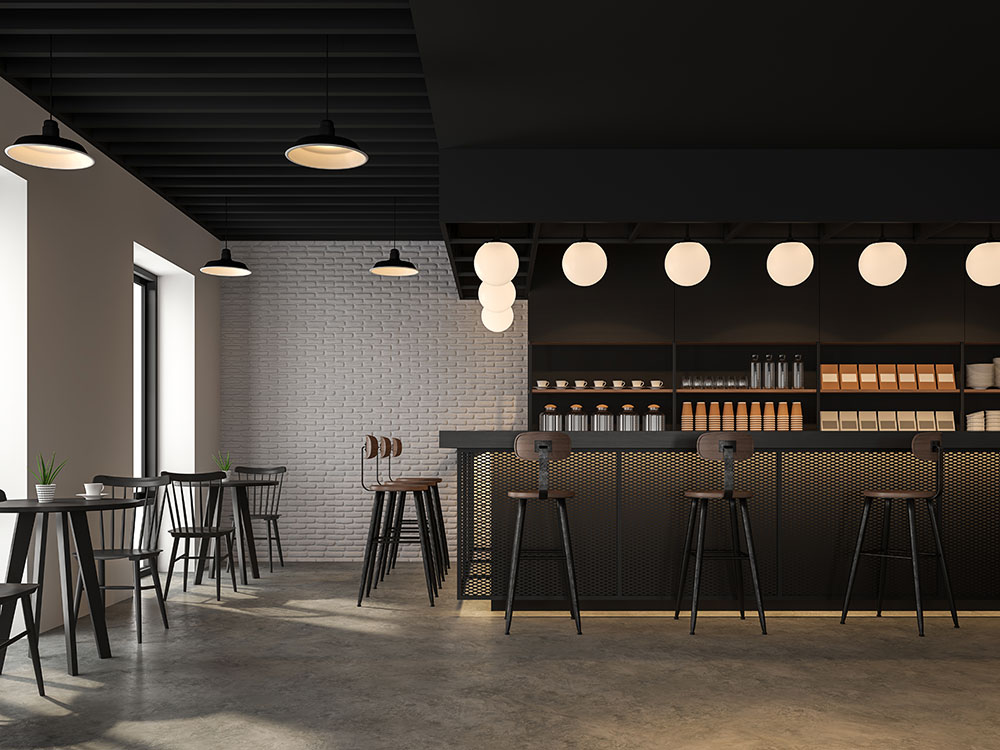Why Standard Grey Concrete is Worth the Investment for Your Business
- April 22, 2020
- Written By Levi Saunders
- Benefits of Decorative Concrete
Standard grey or plain concrete is becoming a popular choice for warehouses, showrooms, and factories. Even retail stores are choosing grey concrete over other fancy options. But standard grey concrete has been around for decades.
Concrete’s precursor is believed to have existed in 1300 BC. During that time, Middle Eastern structures had burned limestone, which coated the pounded-clay walls and forts. The chemical reaction with the air gases resulted in a hard surface, which evolved into concrete.
Today, concrete is easily recognisable because of its appearance. While it has many variants now, including coloured and decorative ones, concrete is grey in its natural state.
Grey Concrete for Commercial Properties
Concrete is considered one of the most widely used materials for building homes and commercial structures. You can see it anywhere in the world, whether in downtown or urban areas. The material is described as a composite material with coarse aggregate (which is mostly crushed rocks) and fine aggregate or sand. These ingredients will be mixed with water to make it more viscous and workable.
Standard grey concrete plays a significant role in constructing buildings, primarily commercial structures. From towering skyscrapers to parking decks to office buildings, concrete is a mainstay in commercial construction projects.
All kinds of commercial and industrial buildings, such as warehouses, plants, and shopping malls, have one thing in common. They aim to meet the requirements of developers and investors. Plus, they have to construct a building that can withstand heavy workloads and usage. This way, project profitability is ensured by maintaining the continuity of all operations in the business.
During the building process, there are a few challenges you could face:
- If you are the contractor, you want to sell or rent out the building as soon as possible. This way, you can truly profit from the investment.
You also want to reduce maintenance and repairs; otherwise, commercial or industrial activities can halt. When it happens, profitability is greatly reduced. - If you are working on a project involving a shopping mall or supermarket, you want the property to attract many customers. Therefore, the aesthetics of the property is essential.
- In some construction projects, you need to ensure the buildings are resilient despite high performance and use. Thermal insulation may also be required.
Standard grey concrete can help you meet your building objectives. The contractor that you will hire can work with you to make the job site more efficient. Concrete can be poured horizontally. Depending on the project you are working on, you can have the walls mounted onsite. It will ensure faster assembly, and less time will be required for the building process.
The Top Benefits of Grey Concrete
You may have heard about the many benefits of using concrete, particularly for residential properties. Since the material is widely used, there is no question about its advantages. In the commercial world, it offers the following benefits:
-
Affordable
Compared to other materials, concrete is much more economical. Many commercial properties utilise steel as part of their construction design. Unfortunately, steel is becoming more expensive, mainly because of its raw materials, namely iron and coal, are pricier than ever.
Concrete is more efficient and cheaper. If your goal is to have an energy-efficient building, this material is your best choice. In the long run, concrete structures reduce more heating and cooling requirements. The thermal mass lowers energy use by as much as 29%.
-
Local
Concrete is available everywhere, including Australia. The suppliers in the country do not usually ship the material to other parts of the world. This method of distribution offers many positive impacts. For one, you only have to deal with local suppliers. You are contributing to the prosperity of the local economy in your own way.
Another benefit of local dealings is for the environment. Since it is locally produced and shipped, the environment does not suffer from vehicles’ gas emissions. Also, it lets you save more money because the material is more affordable than those that come from other places.
-
Mouldable
Some building materials can only create one shape or form. They do not accept moulds, so they cannot be used in other types of structures. You will not have this issue with concrete. The use of the material is limited only to the imagination and ability of the builder or architect.
Concrete cures in place, which allows you to form various moulds and designs. You can use concrete for poured foundations and even outdoor spaces. As you can see, it is an incredibly fluid material.
-
Durable
Unlike other materials, concrete is resilient and can last for several years. On its own, standard grey concrete can withstand harsh weather and constant use. However, you can reinforce it to make it stronger. After reinforcement, it can withstand calamities, heavy moistures, pests, and even abuse.
Commercial floors endure daily heavy use. Therefore, you need a high-performing material that can take foot and vehicle traffic. Often, these surfaces are subject to abrasions and stains. You want a floor that is easy to maintain, and you can achieve this goal with concrete.
-
Fire-resistant
Concrete is a fire-retardant, which is essential for any commercial property. The material can prevent the spreading of fires. Therefore, it helps protect your investment by controlling fire damage and loss.
-
Flexible
Concrete is compatible with any part of your commercial property. You can use it on the floor, which is its main application. Many warehouses and offices opt for concrete because it is durable and economical. It can also be slip-resistant, making it the top choice for retail stores or shopping malls. After all, you do not want your customers to complain about the slippery floors, which can lead to accidents.
Concrete is also an excellent material to use in commercial parking lots. Because of the material’s durability, it can withstand the coming and going of different vehicles.
-
Easy Maintenance
Just regular sweeping and you are done. Of course, you can also wipe the floors and use a product to make them shine. However, concrete floors are virtually maintenance-free. They may require a little bit of your attention, but it is usually after every few years.
If you have a commercial property that accepts customers every day, you want to make sure the floor is easy to clean. It should also repel spills and stains, primarily if you are operating a restaurant, for example.
Concrete floors give you less headache compared to other materials, including the more expensive options.
Standard Grey Concrete vs Coloured Concrete
Plain grey or standard concrete is the simplest type of concrete out there. It does not require any form of reinforcement – it is what it is.
Cement is commonly used in the mix, along with water and aggregates. Producing concrete requires the proportion of 1:4:2 of the components mentioned in their respective order. Concrete density is typically from 2,200 to 2,500 kg/cubic metre. On the other hand, its compressive strength is from 200 to 500 kg per square centimetres.
Standard grey concrete is often utilised to construct pavements, buildings, and pathways in areas where high-tensile strength is not a significant requirement.
While there are numerous benefits of standard concrete, some people like coloured options more. Concrete is no longer just grey; colourful selections are around. But which one is better?
One thing to know about coloured concrete is that it does not use dye, paint, or stain to produce the hues. The correct term is ‘pigment’, which can be mined from the ground. In some other cases, the colour is manufactured in a chemical plant, either in liquid, granular, or powder variety.
To understand how the colour is achieved, you only have to think about iron oxide pigments. They are particles that are so much smaller than the cement particles. When pigment is added to cement, these smaller pigment specks cover the cement particles.
For some people, coloured concrete is more attractive than grey concrete. After all, the former looks livelier and distinct. You can choose your own hue and design, which gives you a better way to customise your office, warehouse, or any commercial property. However, there are a few reasons why professionals recommend grey over coloured concrete.
If you are on a tight budget, you can stick to grey concrete. Because of its simplicity, it does not require additional treatment, which cuts your expenses in half – or even more.
Perhaps the biggest issue with coloured concrete is that it can fade over time. If it is exposed to harsh weather and site conditions, you can expect it to wear quickly. You will be left with uneven colours, especially if coloured concrete is outdoors. You can already tell it is not an attractive sight.
Standard grey concrete rarely rots and decays. You also do not have to worry about the surface looking patchy. It remains grey no matter what the season may be. For this reason, plain concrete is a great option if you wish to use concrete for your commercial property. It will not fade and can even become more attractive over time.
If you’d like to discuss your project and how Decorative Concrete WA can help, get in touch with our expert team today.


